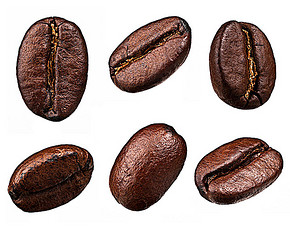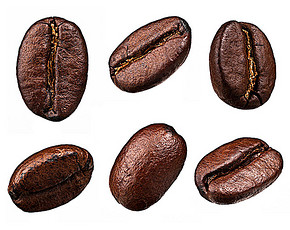Sunlight Sidamo Coffee Introduction
Pay attention to coffee reviews (Weixin Official Accounts vdailycom ) and find a beautiful cafe to open your own shop
Ethiopia has a variety of coffee cultivation methods: from wild coffee groves and semi-developed plots to traditional small plots to modern plantations. About 50 percent of coffee is grown at altitudes of more than 1500 meters.
Harrar coffee is one of the highest growing species of coffee in Ethiopia. Hara coffee can be divided into long coffee beans and short coffee beans, of which long coffee beans are the most popular. It has a soft taste, with a wild aroma, and slightly sour, after drinking unforgettable. Djimmah coffee is wild at an altitude of more than 1200 meters and is sold under two brands, Lima coffee (limu) and babeka coffee. Other coffee names include Sidamo coffee from Central, sold under the brand name Yirgachaffe, and coffee with distinctive flavors from Lekempti. Jima and Sidamo coffee beans are not very pleasant in appearance, but they taste very good.

1. After picking, the beans have not been specially selected and treated, and the uneven quality and maturity are mixed together. The process is relatively rough, so the quality of coffee beans is unstable and easy to have defective beans.
2. Coffee farmers usually find a vacant lot near their homes to deal with, so there are often a lot of impurities or dirty things on the ground, and coffee is easily contaminated with impurities.
The improved solarization method aims at improving the two shortcomings of the traditional method:
1. Only fully ripe dark red coffee cherries are picked at the time of harvest. Before being exposed to sunlight, the beans are screened for defects at the processing plant to make the beans look more average in size and maturity.
2. Then, use a raised wooden frame or whole trellis for sunning, which will avoid the risk of the beans getting contaminated by the smell on the ground. During the exposure process, the beans should be carefully cared for so that the coffee beans can be evenly exposed to moisture; every three to five days, coffee workers will manually screen out defective moldy beans. So by the time the sun is done and the beans come into the field without the skin and flesh, a piece of sunburned, bright red coffee cherry is already at a very blemish grade.
After obtaining the green coffee beans, sometimes in order to pursue the perfect taste, a final screening will be done, so this sun-cured sidamole can reach the highest level of G1.
Important Notice :
前街咖啡 FrontStreet Coffee has moved to new addredd:
FrontStreet Coffee Address: 315,Donghua East Road,GuangZhou
Tel:020 38364473
- Prev

Sidamo coffee beans ripen in what months of the year
Following Cafe Review (Wechat official account vdailycom) found that Cafe Cafe opened a small shop of its own, Sidamo Coffee beans ripened every few months every year, Ethiopia's bean picking season is from October to December! Ethiopia Sidamo G2, Ethiopia: the Sidamo producing area is located in the south of Ethiopia, extending to the Arsi and Bale districts in the east and Gamogofa to the west.
- Next

Katim coffee beans taste
Following caf é comments (Wechat official account vdailycom) found that the beautiful cafe opened a small shop of its own to mention Yunnan coffee. Perhaps the word we hear most is Yunnan small grain coffee, and most of them will say that Yunnan small grain coffee is fragrant but not bitter, strong but not strong, so many people classify Yunnan coffee varieties as small grain species, so it is natural to evaluate the taste of Yunnan coffee.
Related
- Detailed explanation of Jadeite planting Land in Panamanian Jadeite Manor introduction to the grading system of Jadeite competitive bidding, Red bid, Green bid and Rose Summer
- Story of Coffee planting in Brenka region of Costa Rica Stonehenge Manor anaerobic heavy honey treatment of flavor mouth
- What's on the barrel of Blue Mountain Coffee beans?
- Can American coffee also pull flowers? How to use hot American style to pull out a good-looking pattern?
- Can you make a cold extract with coffee beans? What is the right proportion for cold-extracted coffee formula?
- Indonesian PWN Gold Mandrine Coffee Origin Features Flavor How to Chong? Mandolin coffee is American.
- A brief introduction to the flavor characteristics of Brazilian yellow bourbon coffee beans
- What is the effect of different water quality on the flavor of cold-extracted coffee? What kind of water is best for brewing coffee?
- Why do you think of Rose Summer whenever you mention Panamanian coffee?
- Introduction to the characteristics of authentic blue mountain coffee bean producing areas? What is the CIB Coffee Authority in Jamaica?

